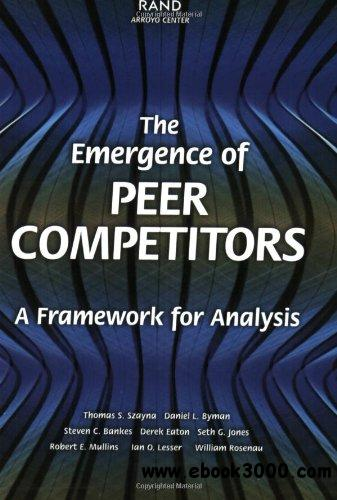
The subject of this thread is "The Forgotten and Buried Intelligence Lessons of Pearl Harbor, December 7th, 1941."
It is both a 2019 column of mine on the Chicagoboyz blog & an enduring lesson for today.
chicagoboyz.net/archives/61235…
1/
It is both a 2019 column of mine on the Chicagoboyz blog & an enduring lesson for today.
chicagoboyz.net/archives/61235…
1/
The successful surprise Kido Butai carrier fleet movement to Pearl Harbor was the result of a sophisticated the denial and deception measures to blind allied signals intelligence as to their movements.
2/
2/

A deceptive movement that worked thanks to the hard work & diligence of both Adm Isoroku Yamamoto's staff planners as well as pre-war Japanese intelligence.
The IJN played the US Pacific Fleet's operational tendencies like a harp.
3/
The IJN played the US Pacific Fleet's operational tendencies like a harp.
3/

American elite political and military leaders of that era collective swore of “Never Again.”
That is, “Never again will the USA be so surprised by a foreign enemy.”
4/
That is, “Never again will the USA be so surprised by a foreign enemy.”
4/

Yet despite that, America has indeed been “surprised” in exactly the way of Pearl Harbor repeatedly since 1941. The Korean war is one example five years after WW2 ended. The Soviet Invasions of both Czechoslovakia and Afghanistan in 1968 and 1979 are two others
5/

5/


It was certainly an intelligence surprise on 9/11/2001 with the attacks on the World Trade Center in NY City and the Pentagon in Washington D.C., the “surprise” of there being few/no WMD in post 2003 Iraq, the drone-missile attack on Saudi Arabian oil refining facilities,
6/

6/


the recent fall of Kabul to the Taliban, and now China's orbital hypersonic glide vehicle weapon are all "Strategic Intelligence Surprises by Foreign enemies."
7/

7/


The standard histographic answer for these failures is Racism, or the term "Ethnocentric," which both includes the old Soviet Union and lets current US Politico-Military elites virtue signal they are not those old schlubs.
(Please ignore Kabul & Chinese HGV intel failures).
8/
(Please ignore Kabul & Chinese HGV intel failures).
8/
The dominant historiography of American intelligence failures before Pearl Harbor blames the racism of American (and British) military intelligence officers, Flag Rank military officers and elected political leaders for missing the arrival of Imperial Japan as a military
9/
9/

“peer competitor”in the late 1930’s…until the the reality of torpedoes of the Kido Butai arrived in the hulls of the Pacific Fleet’s battle line. This historiography’s apogee was reached with John Dower’s 1986 book War without Mercy: Race and Power in the Pacific War.
10/
10/

I’ve always cast a gimlet eye on this “Racism was the sole cause” historiography as being an easy & far too simplistic approach that does a disservice to both history & the the people involved. Yes racism played a role. But to say it was the _Sole Reason_ for Intelligence
11/
11/
failure denies the Imperial Japanese & other US enemies agency. Which is another form of racism, when you think about it.
The competence of the Imperial Japanese military and state had a whole lot to do with their success at Pearl Harbor, and everywhere else, until
12/
The competence of the Imperial Japanese military and state had a whole lot to do with their success at Pearl Harbor, and everywhere else, until
12/

the Battle of Midway and the Guadalcanal campaign.
In short: The Enemy gets a vote.
That’s why they are called “The Enemy.”
13/

In short: The Enemy gets a vote.
That’s why they are called “The Enemy.”
13/


So, if Racism was neither the sole nor the primary cause of American intelligence failures of that time. You have to ask the question:
“What did American intelligence know about the Japanese, when did it know it, and why did it get so much wrong by Dec 6th 1941?”
14/
“What did American intelligence know about the Japanese, when did it know it, and why did it get so much wrong by Dec 6th 1941?”
14/
There is a historiography doing just that. In chronological order see the following articles of this emerging historiography:
Ralph Lee Defalco III “Blind to the Sun: U.S. Intelligence Failures Before the War with Japan” (2003), tandfonline.com/doi/abs/10.108…
15/
Ralph Lee Defalco III “Blind to the Sun: U.S. Intelligence Failures Before the War with Japan” (2003), tandfonline.com/doi/abs/10.108…
15/
R.J. Hanyok’s “Blinded by the Rising Sun: Japanese Radio Deception Before Pearl Harbor” (2006), historynet.com/blinded-by-the…
16/
16/
R.J. Hanyok’s “Catching the Fox Unaware”—Japanese Radio Denial and Deception and the Attack on Pearl Harbor” (2008) ibiblio.org/pha/myths/Japa…
17/
17/
Bob Bergin’s “Claire Lee Chennault and the Problem of Intelligence in China,” Studies in Intelligence (2010), cia.gov/static/94bf6ca…
19/
19/
Justin Pike’s (@CBI_PTO_History) "Blinded by the Rising Sun? American Intelligence Assessments of Japanese Air Power, 1920-41”
serialized in three parts on the Balloon’s to Drones web site in August and September 2017 balloonstodrones.com/2017/08/24/bli…
20/
serialized in three parts on the Balloon’s to Drones web site in August and September 2017 balloonstodrones.com/2017/08/24/bli…
20/
Defalco’s and Bergin’s works cover the sole American who got it right about Imperial Japanese air power pre-WW2 — including the capabilities of the A6M Mitsubishi Zero fighter — then retired captain and future USAAF General Claire Chennault.
21/
21/

General Chennault’s memoir “Way of a Fighter” makes clear he was as much a racist towards the Japanese as any other US officer of his times…yet he was also right about their aerial war making capabilities when everyone else in American pre-war intelligence was wrong.
22/
22/

Defalco and Bergin explain why that was.
Hanyok’s works are on how Imperial Japanese naval intelligence determined what Anglo-American signals intelligence capabilities were.
How the IJN planned the denial and deception measures to blind them as to the movements
23/
Hanyok’s works are on how Imperial Japanese naval intelligence determined what Anglo-American signals intelligence capabilities were.
How the IJN planned the denial and deception measures to blind them as to the movements
23/

of their Kido Butai carrier fleet and how well they executed that plan up to Pearl harbor.
Taken together, they paint a picture of Imperial Japan as a fell “high tech” foe, an enemy fully versed in the latest in electronic intelligence…and the means to deceive it.
24/


Taken together, they paint a picture of Imperial Japan as a fell “high tech” foe, an enemy fully versed in the latest in electronic intelligence…and the means to deceive it.
24/



Pike’s serialized work does a forensic analysis of classified American intelligence on the Japanese from the end of World War I to the beginning of World War II. Pike finds little if any outright racism. What he does find is that American intelligence was highly accurate in
25/
25/
...the 1920’s to early 1930’s, when the Imperial Japanese allowed open access to their society.
This is how he closed part one of his series:
26/
This is how he closed part one of his series:
26/

When the Imperial Japanese Military closed that access in the early-1930’s due to the war in China. American intelligence work increasingly diverged from the changing Japanese reality and started filling the lack of intelligence with regurgitated open source articles
26/
26/

that repeated the 1920’s tropes of lack of originality in design and backwardness in tactics and equipment.
Tropes that live on today regards the Western WW2 histories of the Imperial Japanese war efforts.
27/
Tropes that live on today regards the Western WW2 histories of the Imperial Japanese war efforts.
27/

The problem regards Pearl Harbor and all the other "intelligence failures" since Dec. 7, 1941 wasn't racism.
It was another "-ism"
Clientelism
28/
en.wikipedia.org/wiki/Clienteli…
It was another "-ism"
Clientelism
28/
en.wikipedia.org/wiki/Clienteli…
Clientelism is the one-word description of patron-client relationships whose synonyms include words like patronage, cronyism and corruption.
It is the corrupt patron-client relationship between US Elites & its intelligence leaders which is where these failures dwell.
29/
It is the corrupt patron-client relationship between US Elites & its intelligence leaders which is where these failures dwell.
29/
The terms “Military-Industrial Complex” or “Iron Triangle” have grown up since Pearl Harbor to describe the aligned interests of elected civil, military, intelligence and other federal bureaucratic elites in the Federal Government who are patrons of government largess.
30/

30/


It wasn’t until Samuel Huntington’s book "The Soldier and the State – the Theory and Politics of Civil-Military Relations" in 1957 that “Civil-Military Relations” describing these relationships in academic terms was written.
31/
archive.org/details/soldie…
31/
archive.org/details/soldie…

And it wasn’t until Amy Zegart’s 2000 book "Flawed by Design: The Evolution of the CIA, JCS, and NSC" that how these various elites operated in creating the intelligence community that simply can’t ever do it’s post-Pearl Harbor job of making sure of “Never Again.”
32/
32/

Unfortunately Amy Zegart was wrong about the NSC escaping Clientelism.
The Iraqi WMD debacle after the 2003 invasion saw to that and for the same reasons US intelligence failed at Pearl Harbor.
34/
The Iraqi WMD debacle after the 2003 invasion saw to that and for the same reasons US intelligence failed at Pearl Harbor.
34/

What Amy Zegart & nearly every other academic has missed is a structural weakness of the American state in the face of totalitarianism or authoritarianism.
Both can do decades long deception & denial campaign that allows the soft corruption of US Clientelism to grow
35/
Both can do decades long deception & denial campaign that allows the soft corruption of US Clientelism to grow
35/
Both the NSC with Iraqi WMD's & US intelligence on Japan before Pearl Harbor saw the weight of old and incorrect “conventional wisdom” grow so large that saying anything else became threat to an intelligence officer’s opportunities for advancement.
36/
36/

Thus, by 1937, when the Imperial Japanese were making truly original and innovative aircraft a generation past anything they previously copied.
American military intelligence officers simply could not go there. 37/
American military intelligence officers simply could not go there. 37/
Bucking the “conventional wisdom” — group think — was too professionally dangerous given the decade and a half of ingrained & by then horrid intelligence reports that had become belief system and budgets of the flag rank/political patrons above them.
38/
38/

This is how Bob Bergin put it regards Chennault’s bumping conventional wisdom group think in his “Claire Lee Chennault and the Problem of Intelligence in China” –
39/
39/

The inability of 1930’s American military intelligence to digest valid intelligence data against the conventional wisdom of elites are all too familiar to students of the 2003 Iraqi WMD debacle.
40/
40/

In a real sense the lessons of the surprise of Pearl Harbor or 2003 Iraqi WMD debacle were buried because they are too painful to learn.
There is no political reform that will fix the clientelism in the structure of the American state which existed in 1941, in 2003 or now
/End
There is no political reform that will fix the clientelism in the structure of the American state which existed in 1941, in 2003 or now
/End
• • •
Missing some Tweet in this thread? You can try to
force a refresh


















